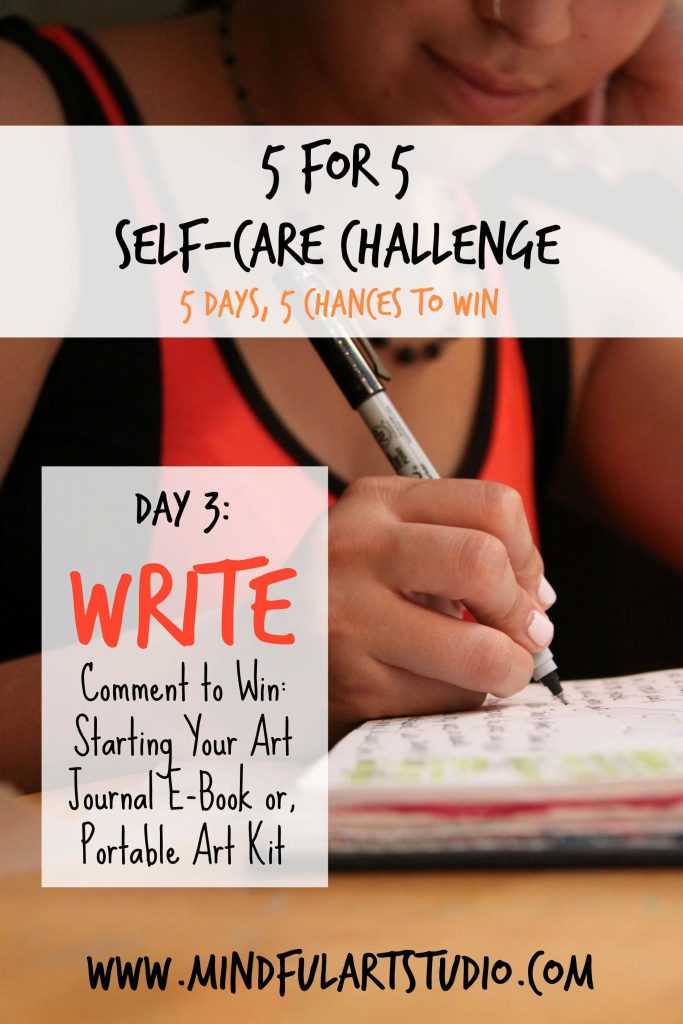Writing for Freedom: The Therapeutic Power of Creative Writing

The Healing Power of Expression Through Writing
For countless individuals, the act of writing transcends simple prose or poetry; it becomes a lifeline, a sanctuary where thoughts can be laid bare. The therapeutic effects of creative writing are profound and multifaceted, offering not only an avenue for self-expression but also a pathway to enhanced emotional well-being. Engaging in writing practices often leads individuals to discover clarity in their feelings, find comfort in shared experiences, and ultimately achieve a sense of freedom from internal turmoil.
Creative writing serves as a personal mirror, reflecting our emotional states and allowing for deeper emotional processing. When individuals write about their experiences, especially traumatic ones, they engage in a form of cognitive restructuring that can help in making sense of their emotions. Research has shown that expressive writing can significantly reduce symptoms of depression and anxiety by enabling individuals to articulate their thoughts and feelings.
Furthermore, the mental health benefits are reinforced when individuals share their writing in supportive environments. Consider creative writing workshops, which are increasingly common across the United States, where participants can gather to share their stories. Not only does this practice reduce stress and anxiety levels, but it also cultivates a sense of community among participants. One notable example is the Pen America’s Prison Writing Program, which offers incarcerated individuals the opportunity to write. Many participants report remarkable transformations, feeling empowered as they reclaim their narratives and build self-esteem.
Aside from these communal benefits, writing also facilitates self-discovery and offers personal insight. As individuals confront their inner demons, they often recognize patterns in their behavior and thought processes, leading to transformative healing experiences. This dynamic can be likened to a mental map, guiding writers through their feelings and towards a healthier emotional space.
In essence, creative writing not only invites individuals to confront their experiences but also encourages them to articulate their fears and celebrate their victories. It opens up new perspectives, providing a creative outlet for feelings that might otherwise remain trapped. Through this exploration of creativity and emotion, individuals can navigate their journeys toward healing and liberation.

As we continue to explore the therapeutic potential of writing, it is evident that this powerful art form is more than just a hobby; it is a profound mechanism for fostering mental wellness. By embracing creative writing, countless individuals embark on fulfilling journeys of emotional exploration and recovery, proving that the written word has the potential to change lives.
DISCOVER MORE: Click here to dive deeper
Unlocking Emotions: How Writing Facilitates Healing
The journey of self-discovery through writing often begins with a pen and a blank page. For many, this simple act can ignite a profound healing process. The act of putting words onto paper can function as a powerful mechanism for emotional release, allowing individuals to sift through layers of complex feelings. Notably, recent studies indicate that creative writing not only fosters emotional well-being but can also bolster cognitive functions, enhancing creativity and problem-solving skills.
One key feature of therapeutic writing is its capacity to encourage vulnerability. When writers set out to express their thoughts, they often dive into deep waters of personal experience that may have remained unexamined. This exploration can unveil suppressed emotions, leading to a cathartic realization. Moreover, research led by psychologists has shown that writing about traumatic events can facilitate a sense of closure. By narrating their own stories, individuals are able to reframe their experiences, thus diminishing the emotional burden associated with those memories.
The Mechanics of Healing through Writing
Creative writing serves several essential functions in aiding emotional recovery:
- Expression of Feelings: Writing provides a unique platform to articulate feelings that may otherwise remain unspoken.
- Cognitive Clarity: The process encourages writers to organize their thoughts, leading to clearer understanding and less emotional chaos.
- Personal Empowerment: By taking control of their narratives, individuals can regain a sense of agency over their lives.
- Community and Support: Sharing written work fosters connection with others, diminishing feelings of isolation.
Moreover, many therapeutic writing exercises prompt participants to explore prompts that challenge them to confront their challenges. In a landscape where mental health resources are often limited, creative writing can serve as a tool accessible to nearly anyone. Some opt for writing in solitude, finding that the act of creating becomes their sole refuge, while others immerse themselves in group workshops. The communal aspect, as seen in programs such as National Novel Writing Month (NaNoWriMo) or local writers’ groups, creates a sense of solidarity, wherein participants can relate to one another’s narratives.
The impact of creative writing on personal growth extends beyond emotional healing. Individuals often report improved self-esteem and an enhanced sense of identity. The act of writing can reveal hidden talents, paving the way for new paths in education or career. Furthermore, in a world saturated with digital communication, the tactile experience of writing by hand can ground individuals, creating a greater connection to their emotions and experiences.
Ultimately, creative writing champions the notion that everyone has a story worth telling. Engaging in this intimate craft allows individuals to strip away the armor of societal expectations, embrace vulnerability, and navigate the intricate pathways of their inner lives, leading to forms of liberation and catharsis that resonate deeply.
| Advantages | Details |
|---|---|
| Emotional Expression | Creative writing allows individuals to articulate emotions and experiences that are often difficult to express verbally, leading to a deeper understanding of oneself. |
| Stress Relief | Engaging in writing can serve as a therapeutic outlet, significantly reducing stress levels by focusing thoughts on paper instead of internal turmoil. |
Creative writing has emerged as a powerful tool in the realm of therapy. By offering a unique medium through which individuals can engage with their thoughts and feelings, it fosters a sense of freedom and empowerment. Notably, writers who engage in creative expression often report enhanced self-awareness and increased emotional resilience. Through the act of writing, they can confront and process complex emotions, thereby unlocking paths to healing and self-discovery.Additionally, community writing workshops and support groups have blossomed, creating spaces where shared narratives generate connections and support among participants. The shared experience of writing can cultivate a sense of belonging, reinforcing the idea that one is not alone in their struggles. This collective engagement not only diminishes feelings of isolation but also encourages collaboration and inspiration.As education systems begin to incorporate creative writing into their curricula, the potential benefits expand beyond personal growth. Early exposure can foster critical thinking and empathy in students, qualities essential for navigating life’s more challenging interactions. Ultimately, the revolutionary impact of creative writing lies not just in self-expression, but also in its capacity to connect, heal, and nurture the human experience.
DISCOVER MORE: Click here to elevate your plating skills
Navigating Trauma and Building Resilience through Writing
The therapeutic power of creative writing extends beyond mere emotional expression; it serves as a tool for navigating the tumultuous waters of trauma. Many clinical psychologists have begun to recognize writing as a formal method of trauma-informed care. Rather than allowing traumatic experiences to dominate one’s narrative, creative writing encourages individuals to reclaim their stories, fostering resilience. Research published in the Journal of Writing Research indicates that people who engage in expressive writing about distressing events tend to experience reduced symptoms of anxiety and depression.
In the United States, various organizations like Writing for Peace and the National Writing Project have harnessed this concept, providing workshops aimed at helping individuals, including veterans and survivors of abuse, confront their past experiences through the written word. Participants report that the act of writing about their trauma not only facilitates emotional processing but also cultivates a sense of empowerment. By articulating their experiences, they are able to view their lives through a lens of strength rather than victimhood.
The Role of Structured Writing Exercises
Structured writing exercises are essential for guiding individuals through the therapeutic process. Techniques such as freewriting, where participants write continuously without regard to grammar or topic, can lead to breakthroughs by allowing deeper emotions to surface without the constraints of editing. Other methods include guided prompts that encourage exploration of specific events or emotions. Popular examples include:
- Letter Writing: Composing letters to oneself or to others, allowing for a safe space to express feelings that may have previously gone unspoken.
- Journaling: Keeping a daily journal can serve as both a reflection and a record of progress over time, enhancing personal insight.
- Storytelling: Crafting personal narratives encourages individuals to understand their experiences as interconnected stories, aiding in pattern recognition and growth.
Furthermore, certain narratives can inspire collective healing in group settings. When participants share their writing, they contribute to a community of understanding and support. This atmosphere can significantly counteract feelings of isolation that many experience after trauma. Programs designed to facilitate such communal writing have reported high levels of participant satisfaction and emotional relief.
In the educational realm, writing programs integrated into school curriculums are proving increasingly beneficial for young adults grappling with the complex challenges of adolescence. Initiatives like the Writers in the Schools (WITS) program encourage students to process their experiences through poetry and prose, reinforcing the connection between writing and mental health from an early age. Research has shown that students involved in such programs exhibit greater resilience and improved academic performance.
Additionally, the digital era has opened avenues for online writing communities, where individuals can anonymously share their work and receive feedback. Platforms like Wattpad and Medium provide spaces for writers to explore their stories and connect with like-minded individuals, further enhancing the therapeutic process.
Ultimately, creative writing emerges as a comprehensive approach to therapy, offering a multifaceted outlet for healing and self-exploration. Whether through solitude or shared experiences, writing not only facilitates emotional release but also empowers individuals to navigate their journeys toward healing.
DISCOVER MORE: Click here to enhance your storytelling skills
Conclusion: Embracing Healing through Creative Expression
The exploration of creative writing as a therapeutic tool underscores its profound impact on healing and personal growth. From navigating trauma to fostering resilience, writing provides a unique platform for individuals to articulate their experiences in a safe and constructive manner. As we’ve seen through various studies and initiatives, such as those from Writing for Peace and the Writers in the Schools (WITS), the process of writing not only alleviates symptoms of anxiety and depression but also empowers participants to reclaim their narratives.
In an era where mental health awareness is growing, integrating structured writing exercises into therapeutic settings and educational curriculums can prove invaluable. Whether through freewriting, letter writing, or communal storytelling, these practices foster a deeper understanding of one’s emotions and facilitate connections with others who share similar experiences. Online platforms further enhance this collective journey, offering writers a space to reflect, share, and find solace in community.
Ultimately, as we delve into the transformative power of words, it is clear that creative writing is not just about self-expression; it is a vital resource for healing and introspection. Encouraging individuals to explore their stories invites opportunities for recovery and newfound strength. As we continue to champion these initiatives, we unlock the potential for writing to be a lifeline, guiding individuals toward a sense of freedom and emotional liberation.


